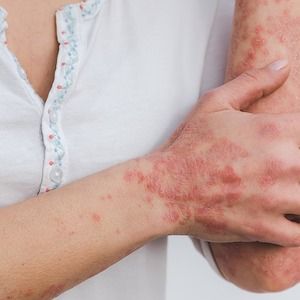Article
Link Identified Between Psoriasis Disease Activity, Cardiovascular Events
Author(s):
New data indicates an association between cardiovascular risk factors and psoriasis disease activity, shedding light on potential ways to identify and help those at risk for future heart issues.

Psoriasis disease activity that is measured through Psoriasis Area and Severity Index (PASI) is linked to cardiovascular events controlling for shared risk factors, according to new findings.1
Those who are known to have severe psoriasis—defined by systemic treatment use—are known to carry higher risk of cardiovascular events than controls and those with milder cases.2 That said, prior to this new study, no data was identified linking psoriasis activity and future cardiovascular events.
These new findings were examined to potentially help find patients with high cardiovascular risk, and the findings may help to decrease cardiovascular risk through the use of psoriasis treatment. The research was authored by Axel Svedbom, MSC, from the Division of Dermatology and Venereology at the Karolinska Institutet’s Department of Medicine in Sweden.
“We linked prospectively collected data on psoriasis disease activity and cardiovascular risk factors from a treatment register to population-based registers with data on cardiovascular events,” Svedbom and colleagues wrote. “The objective of this study was to estimate the association between clinical disease activity in psoriasis measured using PASI and future cardiovascular events in patients treated with systemics for psoriasis.”
Background and Findings
The investigators utilized information gathered over time on PASI scores and cardiovascular disease risk factors, and then they linked this data to population-based administrative records documenting hospitalizations and causes of death.
The way the investigators did this was by monitoring patients over a period of time, considering them exposed to the PASI score through a clinical examination. The exposure period ended at the earliest of 3 possible events:
- The next PASI score measurement
- A cardiovascular event
- End of follow-up
If a patient received a new PASI score during the follow-up period without experiencing a cardiovascular event or end-of-follow-up, they were considered exposed to the new score. This cycle was carried on until patients experienced their first cardiovascular event or until the end of the follow-up period.
To avoid any potential confounders, the research team used the office-based 10-year Framingham CVD risk algorithm to estimate the 10-year risk for cardiovascular events, and the algorithm included several factors including age, blood pressure, sex, smoking status, diabetes, body mass index, and antihypertensive treatment. The study periodically updates the 10-year Framingham CVD risk for each exposure.
The investigators analyzed data from 767 patients with psoriasis and a total of 6,264 PASI scores, and the median age of the patients was 51, and 62.7% were men. The patients in the study had a median 10-year cardiovascular risk of 12.9%, and 6.9% had prior cardiovascular disease.
The patients were followed by the research team for a median of 5,998 years, during which 110 CVD events occurred, resulting in an incidence rate of 1.9 per 100 person years. After adjusting for cardiovascular risk and prior cardiovascular, a one-point increase in PASI was associated with a hazard ratio (HR) of 1.04 for cardiovascular events.
Compared to PASI 0, patients with PASI scores between 0 and 5, 5 and 10, and over 10 had HRs for cardiovascular events of 1.41, 2.23, and 2.32, respectively. Overall, the associations between cardiovascular events and PASI were found to be consistent in all subgroups analyzed.
Confounders were found to be associated substantially with PASI, but the HRs between PASI scores and future cardiovascular events were stable across all confounders. The study also examined the associations between PASI and changes in LDL, HDL, and TG and found no significant associations.
“This association helps identify patients at high cardiovascular risk and strengthens the notion that it may be possible to decrease cardiovascular risk with effective treatment of psoriasis,” they wrote.
References
- Svedbom A, Ståhle M. The Psoriasis Area and Severity Index (PASI) is an Independent Risk Factor for Cardiovascular Events: A Prospective Register Study. J Eur Acad Dermatol Venereol. 2023 May 6. doi: 10.1111/jdv.19168. Epub ahead of print. PMID: 37147891.
- Liu L, Cui S, Liu M, Huo X, Zhang G, Wang N. Psoriasis Increased the Risk of Adverse Cardiovascular Outcomes: A New Systematic Review and Meta-Analysis of Cohort Study. Frontiers in cardiovascular medicine. 2022;9.





